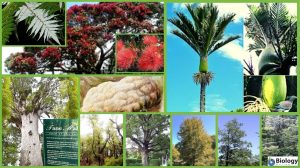The Fungi
What are the Fungi?
The Fungi are the great saprophytes, the master recyclers. They are the black rot, the dry rot, and the white rot, the colorful fate of last week’s lasagna left too long in the ‘fridge, and the great, grey walls of stinking mould that can destroy whole buildings. But, they are also the baker’s yeast and the brewer’s yeast. They are the difference between grape juice and Chateauneuf du Pape. They are the portobellos and the morels and the cloud ears and the truffles. In fact, the French could not be half so obnoxious about their cuisine were it not for the Fungi. But, then again, perhaps they could [1].
We leave that conundrum for another day. The first order of business ought to be the matter of definition. How do we define this group? We have found no hint that anyone is using a workable phylogenetic definition of the Fungi. A phylogenetic definition, for those who have somehow managed to escape our interminable, high-pitched whining on the subject, is a definition based on some explicit hypothesis about a group’s relative position in phylospace. For example, Dinosauria is defined as the last common ancestor of Triceratops and birds and all descendants of that ancestor. This may be conveniently abbreviated: “Triceratops + birds”. Such a definition is quite different from a definition based on some arbitrary set of characteristics which approximate an implicit, unstated, and therefore untestable notion of what a dinosaur “ought” to look like. That second type of definition is referred to as an “apomorphy-based” definition. It is properly viewed with the same derisive contempt with which M. Auguste Escoffier (at right) would regard the use of corn starch to thicken a demi-glace [3].
Were we in a position to impose a phylogenetic definition on the Fungi, our leading candidate would be the stem group “toadstools > toads” (all organisms more closely related to Basidiomycota than to Tetrapoda [2]). That definition presupposes a close relationship between Metazoa and Fungi. However, such an assumption shouldn’t slow us up much. The Metazoa-Fungi connection now seems quite secure. This definition would, however, require us to gather the Microsporidia into the brotherhood of the Fungi. Microsporidia could be Fungi under many definition of the taxon, but they are certainly closer to Fungi than to toads. Such a definition would also dispense with meaningless arguments about the inclusion of the Chytridiomycota within Fungi.
To our discredit, the foregoing discussion may serve as a useful study in the use of the English conditional mode for advanced students of the language, but it ignores the realities of fungal phylogeny. That reality is illustrated in the following examples.
The “fungi contain cell walls and produce spores.” Madigan et al. (2003). So ferns are Fungi?
The Tree of Life will not venture even this far. It contents itself with a list of common names: “The organisms of the fungal lineage include mushrooms, rusts, smuts, puffballs, truffles, morels, molds, and yeasts, as well as many less well-known organisms.” In other words, the fungi are defined by listing a number of vague, vernacular terms with a completely indefinite catch-all category at the end.
“What is Fungi? Fungi are a group of organisms and micro-organisms that are classified within their own kingdom, the fungal kingdom, as they are neither plant nor animal. Fungi draw their nutrition from decaying organic matter, living plants and even animals. They do not photosynthesize as they totally lack the green pigment chlorophyll, present in green plants. Many play an important role in the natural cycle as decomposers and return nutrients to the soil, they are not all destructive.” WHAT IS FUNGI? But this description would apply equally as well to most bacteria.
“These nonmotile eukaryotes lack flagella and develop from spores.” Dr. Fungus- Fungi, Fungus, Fungal. But see the image.
We could beat this drum for quite a long time. The point is that, of the hundreds of references and sites on the web which purport to discuss the Fungi, not one of the many we have reviewed supplies a reasonable definition. Some sources are very useful in listing numerous characteristics of Fungi. But, the more characters listed, the more Fungi (in any phylogenetic sense) they exclude. A substantial majority of sources simply dodge the issue.
Ultimately, we are left in the untenable position of admitting that there is no definition in general use for the word “fungus.” Happily, this yawning gap at the threshold of mycology seems to bother mycologists even less than it bothers the Fungi themselves. Thus, in a manner sanctioned by the universal practice of man and mushroom alike, we will pointedly ignore the yawning abyss at our feet, and move on to other matters.
Source: Palaeos Fungi, viewed March 14, 2007.








